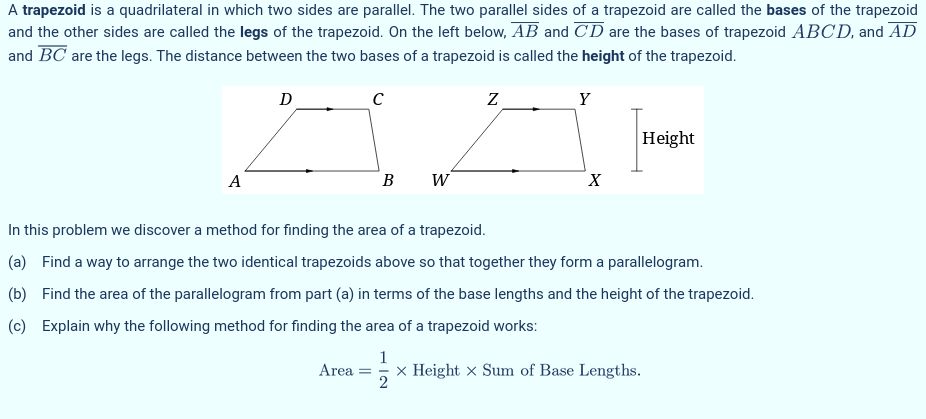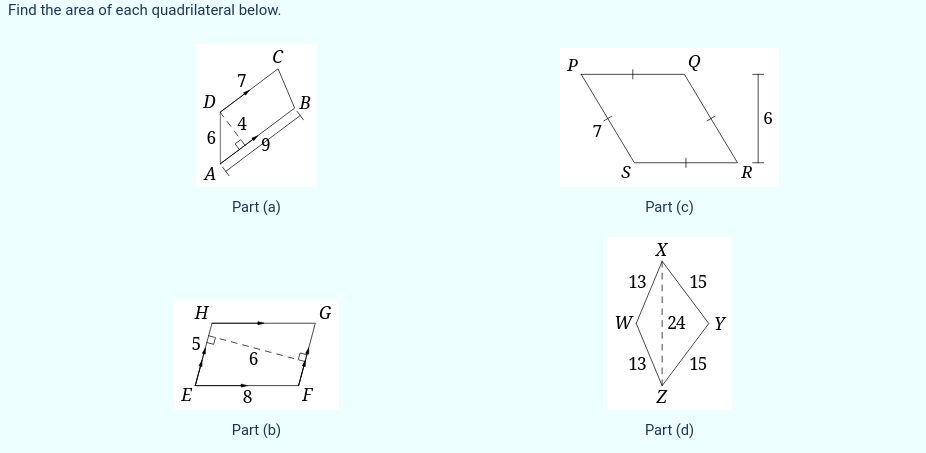12,3 - Types of Quadrilaterals
Links and useful resources
- gr7's Prealgebra Course Outline START HERE<<<
- AoPS Online Textbook
- IXL Grade 7 index
- IXL Grade 8 index
- AoPS Alcumus
- IXL prealgebra practice index
- OpenSTAX Prealgebra-1 textbook
Concept summary and lesson
- Quadrilateral > Trapezoid > Parallelogram > Rhombus > Square
- Parallelogram > Rectangle > Square
Definitions
- Quadrilateral: four-sided polygon
- Trapezoid: Quadrilateral with one (or more) pair of parallel sides
- Parallelogram: Quadrilateral with two pairs of parallel sides (parallel sides are also equal length, not adjacent obviously)
- Rhombus: Parallelogram with all sides congruent (equal measure)
- Square: Rhombus with all right angles
- Rectangle: Parallelogram with all right angles
- Kite: Quadrilateral with two pairs of equal-length sides, where the equal-length sides are adjacent.
About quadrilaterals
Quadrilateral means "four-sided" and it encompasses all polygons with four sides. We're going to be looking at convex quadrilaterals for now, which means that all of the interior angles are less than 180 (there are no "indented" corners that poke inside the shape).
We have different ways of grouping and classifying them:
- How many sides are parallel?
- none: quadrilateral
- two: trapezoid
- four: rhombus
- How many angles are right angles?
- 0-3: quadrilateral
- 4: rectangle
- How many sides are equal in length?
- 4: rhombus
- 2 pairs (not equal to each other): kite or parallelogram. We don't talk much about kites... but they're quadrilaterals where there are two pairs of congruent sides, and the congruent sides are adjacent instead of opposite each other.
Think of the classification as a bunch of checkboxes: Any given quadrilateral can be several of these at once. For example, think of a square:
- quadrilateral? check
- parallelogram? check
- rhombus? check
- rectangle? check
- kite? check
Areas of quadrilaterals
Any trapezoid has an area equal to
Since rectangles are trapezoids, the same formula works there. But, since the sides are perpendicular,
A parallelogram is a trapezoid with equal bases, so it simplifies down to
| Shape | Area formula |
|---|---|
| Trapezoid | |
| Parallelogram | |
| Rectangle |
For other quadrilaterals, the best strategy is usually to cut them into pieces that you can compute easily and then add up the results.
Guided practice


